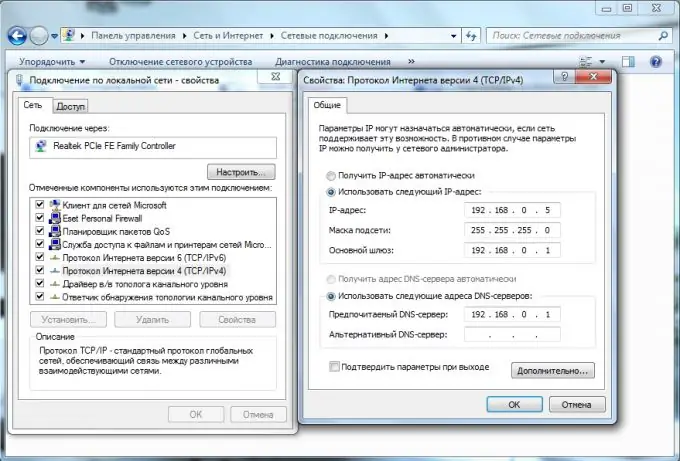- Author Lauren Nevill [email protected].
- Public 2023-12-16 18:48.
- Last modified 2025-01-23 15:15.
An increasing number of users set themselves the goal of setting up shared Internet access for all computers on the same local network. There are several different methods to accomplish this task.

Necessary
network cables, network hub
Instructions
Step 1
Let's take a look at an example of creating and configuring a local area network with shared Internet access using a network hub. The option with a router does not suit us, because the purchase of this equipment was originally designed for the future setting up of an Internet connection.
Step 2
Purchase an additional network card. Install it on one of the computers included in the local network. Take this PC seriously. The fact is that this computer will perform the functions of a router, therefore, it must have sufficient power for this. In addition, by turning off this PC, you will cut off the Internet connection for the entire network.
Step 3
Set up an internet connection on the computer of your choice. If you cannot do it yourself, then ask technical support specialists for help.
Step 4
Use a second adapter to connect your computer to a network hub. Now you got a local network, one of the computers of which is connected to the Internet. Go to the properties of this connection. Open the "Access" tab. Activate the item responsible for allowing the use of this Internet connection by other computers on the local network.
Step 5
The second network adapter should automatically get the IP address 192.168.0.1. If this did not happen, then enter these settings yourself.
Step 6
This completes the setup of the first computer. Go to another PC. Open the properties of the network adapter connected to the hub. Navigate to TCP / IPv4 settings. Set the static (permanent) IP address to 192.168.0. N. N must be less than 250.
Step 7
Find the Preferred DNS Server and Default Gateway fields. Fill them in with the IP address of the first computer.
Step 8
Configure the remaining computers as described in the previous two steps. Naturally, the number N should be different for each PC.






